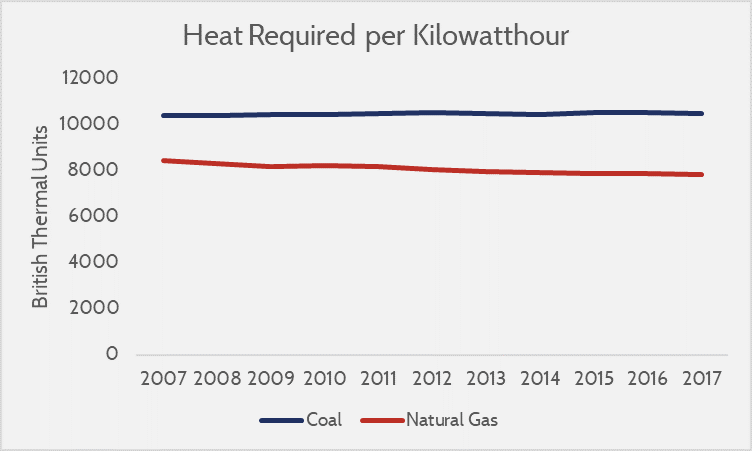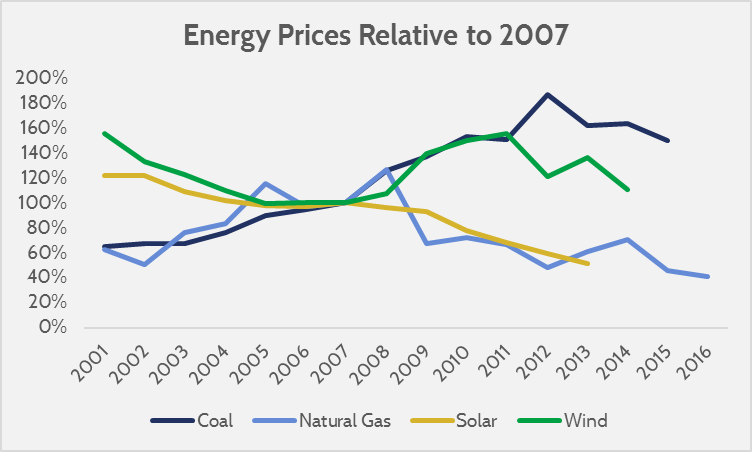Insight
December 10, 2018
New Rules for Coal Plants Do Not Undo Market Forces
Executive Summary
- The Environmental Protection Agency proposed new rules that would ease emission restrictions for new power plants, potentially making it easier to build coal plants in the future.
- While the proposed rule has spurred concern regarding the potential environmental impact of expanded coal production, such concern is largely unfounded.
- In practice, the proposed rule – or any amount of regulatory easing – is unlikely to have a significant impact on coal’s declining competitiveness in the energy market as other market forces continue to erode coal’s competitiveness in energy markets.
Introduction
The Environmental Protection Agency (EPA) recently proposed new rules for reviewing greenhouse gas emissions from new electric power plants. Some fear that the changes to the rules would make it easier to build new coal power plants, and therefore undo environmental initiatives made by President Obama. Such concerns are largely unfounded, however, as it is market forces – not regulations – that are the biggest factor driving coal power’s exit from electricity markets.
The modified rule should not be expected to have a significant impact on the energy mix. As outlined by previous American Action Forum research, there are four key factors driving the retirement of coal plants.
Cheap Natural Gas
Coal has a higher comparative cost than natural gas. While coal and natural gas have different characteristics in an electricity market’s load mix, they are both dispatchable sources (meaning plants can increase electricity production using them at will) and coal is in many cases replaceable by natural gas. Natural gas prices have been low for years and are projected to remain low. In comparison, coal has not had much price improvement. The Energy Information Administration (EIA) expects natural gas will continue to replace coal, thanks largely to price differences.
Source: EIA Price Data (Coal, Natural Gas)
Power Plant Efficiency Changes
Natural gas power plants experienced improving efficiency over the last several years. In fact, not only is natural gas already relatively inexpensive, its cost per unit of producible electricity continues to fall. While coal plants’ efficiency is mostly unchanged, the average heat efficiency of a natural gas power plant’s average heat rate efficiency has improved by 7 percent since 2007. A more efficient coal plant could be built in the future – and EPA Administrator Andrew Wheeler noted his hope that the proposed regulation would promote such a change. As there has been less investment in coal than in natural gas, however, it is difficult to envision future coal plants becoming efficient enough to compete on cost with natural gas.
Source: EIA historical average heat rates for fuel types.
More Competition
Renewable electricity is also getting cheaper. Past AAF research noted that while two-thirds of coal retirements were replaced by natural gas, about one-third was replaced by renewable electricity. Renewables will likely continue to erode coal’s market share.
Source: Averaged levelized costs from the Transparent Cost Database.
Potential for Future Regulation
While the greatest challenge to coal’s expansion comes from the market, potential swings in the regulatory climate also diminish the potential impact of the proposed rule change. A power plant’s capital cost recovery typically occurs over at least 20 years, and power plants can remain open for much longer. Thus, the coal industry must have enough confidence in the future business environment to make major investments, such as new plants. At best, the future for coal regulation looks daunting. There are currently various initiatives to move toward renewable energy (including the “Green New Deal” that would effectively ban coal via renewable portfolio standards). Moreover, California has already adopted a 100 percent clean energy target, and other states are considering their own standards.













